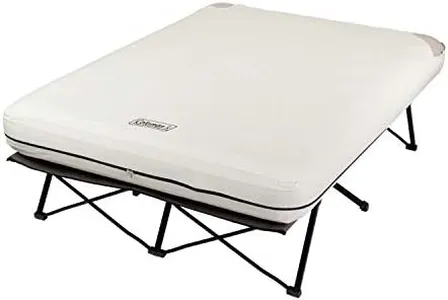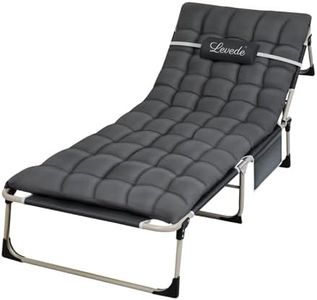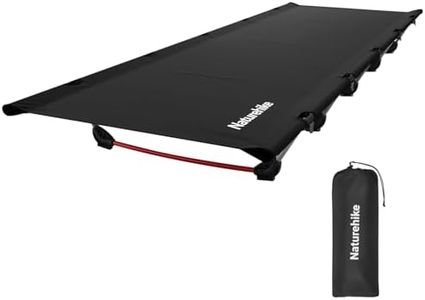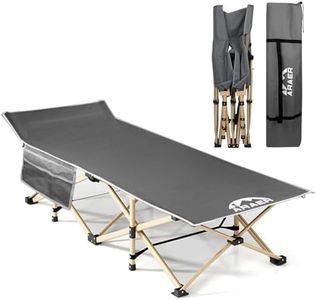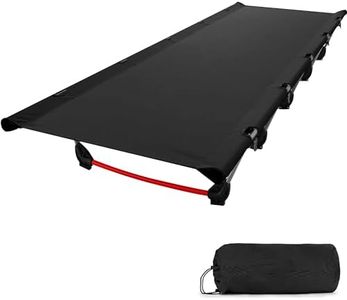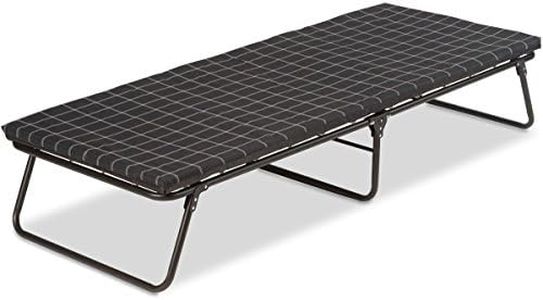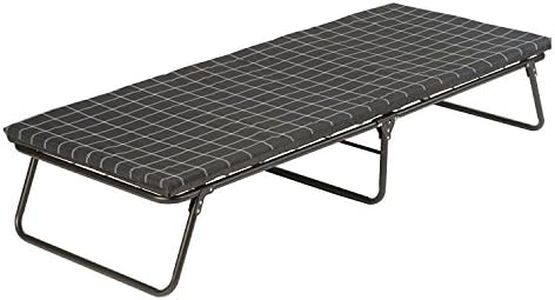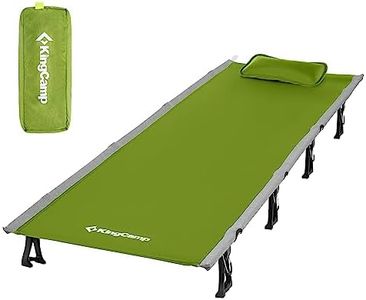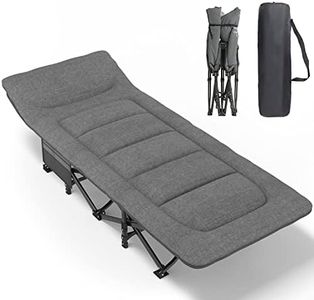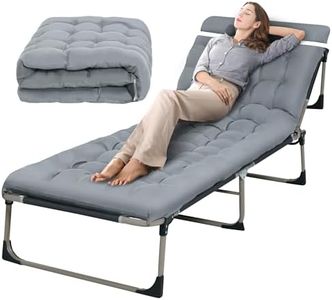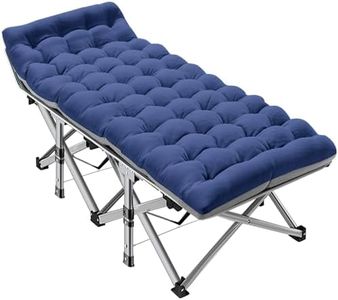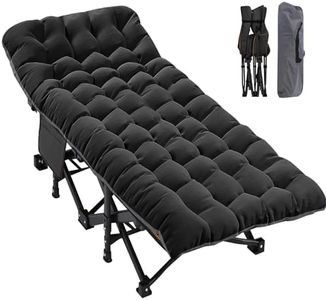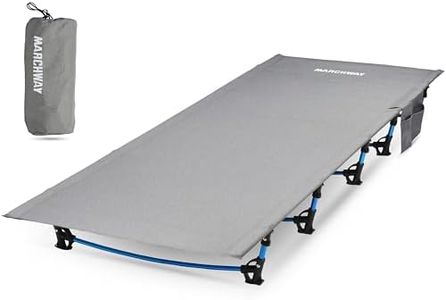We Use CookiesWe use cookies to enhance the security, performance,
functionality and for analytical and promotional activities. By continuing to browse this site you
are agreeing to our privacy policy
10 Best Camping Cot
From leading brands and best sellers available on the web.Buying Guide for the Best Camping Cot
Choosing the right camping cot can make a big difference in your outdoor sleeping comfort. A camping cot gives you a portable, elevated sleeping surface that keeps you off the ground, away from dirt, moisture, and crawling insects. To find the best one for you, it's important to think about how and where you’ll use the cot, what features matter most for your comfort, and how easy it is to carry and set up.Weight CapacityWeight capacity is the maximum supported weight the cot can safely hold. This is crucial because sleeping on a cot that can't support your weight reliably will feel unstable and might break. Cots usually range from around 200 to over 500 pounds. If you plan to use it yourself, just make sure your weight (plus any extra gear if you sleep with a pet or child) is below the limit. Larger users or anyone who wants assurance of extra sturdiness should choose a cot with a higher weight capacity.
Size (Length and Width)The size of a camping cot determines how much space you have to stretch out when sleeping. Taller or bigger people should look for longer and wider cots to prevent feet or arms from hanging off. Cots can range from compact, youth-sized models to extra-large ones suited for big and tall campers. Consider your own height and sleeping style—if you sprawl out, a wider cot helps, while side sleepers often are comfortable on a standard width.
Weight of the CotHow much the cot itself weighs affects portability. Lightweight cots (often under 10 pounds) are best for backpacking or situations where you'll be carrying your gear a long distance. Heavier cots are often more comfortable or robust, but they are better suited to car camping or stationary campsites. Think about how far you'll need to carry your cot and whether ease of transport or sleeping comfort ranks higher for your typical outdoor experience.
Frame MaterialThe frame material, most commonly aluminum or steel, affects durability, stability, and weight. Aluminum frames are light and rust-resistant, making them great for frequent use and ease of carrying. Steel frames are heavier, but stronger and more stable—good for larger users or situations where durability is a top concern. Decide based on whether you prioritize lighter packing or maximum strength and longevity.
Sleeping Surface MaterialThe sleeping surface is usually made from durable polyester or nylon fabric. This affects both comfort and how easy it is to clean. Some materials offer more breathability or water resistance. If you camp in hot weather, look for breathable fabrics; for damp environments, prioritize water resistance. If you like extra cushioning, check if the surface allows for added pads or toppers.
Ease of SetupCamping cots can range from simple fold-out models to those requiring more complex assembly with rods and connectors. The ease of setup matters if you want to set up quickly after a long day or if you move campsites often. Simple, foldable designs are great for those who value quick use, while more involved setups might allow for sturdier or larger sleeping surfaces. Choose based on how much time and effort you want to spend setting up your bed at camp.
Packed SizePacked size refers to how small the cot becomes when folded and stored in its carrying bag. This is important for transport and storage—especially if you have limited trunk space or need to walk with your gear. Smaller packed size is better for backpackers or those with little room, while campers with more space might prioritize comfort over compactness.
Height Off the GroundThe height of the cot determines how far you'll be above the ground when sleeping. Higher cots make sitting down and getting up easier, and keep you further from cold or wet ground. Lower cots are lighter and pack smaller, which is helpful for backpackers. Your mobility and intended use (comfort at the campsite versus minimalism for hiking) should guide your choice here.
